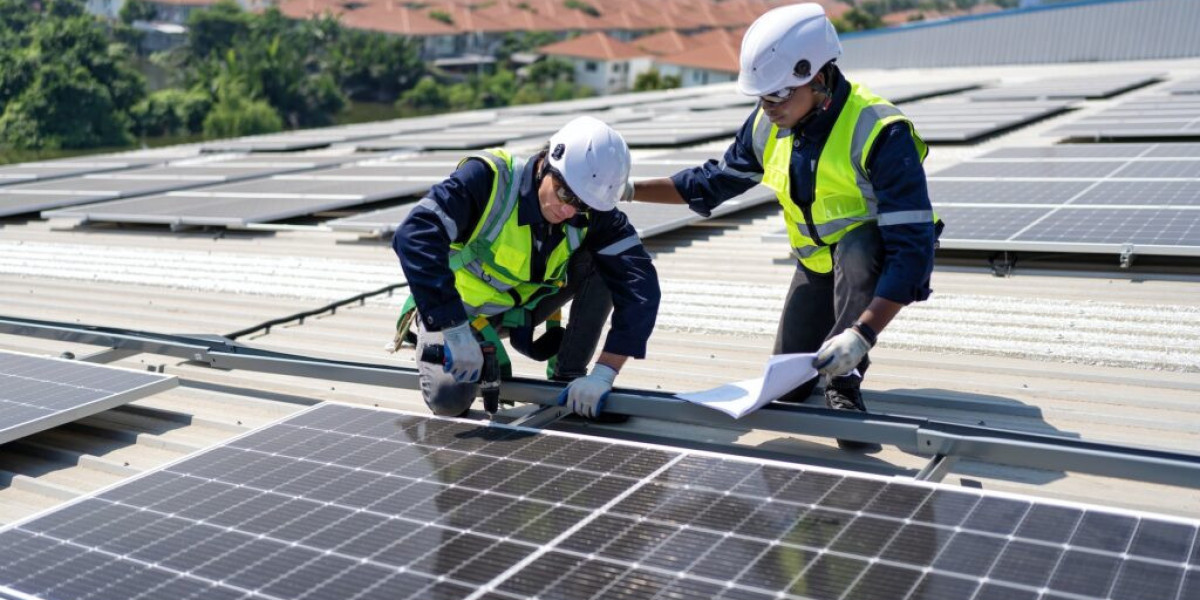Introduction
Solar energy systems are a significant investment, offering substantial long-term benefits such as reduced energy bills, environmental sustainability, and energy independence. To ensure that your solar system operates efficiently and lasts for its full lifespan, regular maintenance is essential. This guide provides an in-depth look at solar maintenance services, their benefits, key components, and tips for selecting the right provider.
Types of Solar Maintenance Services
Routine Inspections:
- Regularly scheduled check-ups to assess the overall health of the solar system and identify potential issues before they become serious problems.
Cleaning Services:
- Professional cleaning of solar panels to remove dirt, debris, and other contaminants that can reduce efficiency.
Performance Monitoring:
- Continuous tracking of the system’s performance to ensure it operates at peak efficiency and to detect any anomalies early.
Repair and Replacement Services:
- Addressing and fixing any issues that arise, including replacing faulty components to maintain optimal performance.
Upgrades and System Optimization:
- Implementing the latest technology and techniques to enhance system efficiency and output.
Benefits of Regular Solar Maintenance
Prolonged System Lifespan:
- Regular maintenance helps extend the life of your solar system, ensuring it operates efficiently for many years.
Maximized Energy Efficiency:
- Keeping the system clean and well-maintained ensures it produces the maximum amount of energy possible.
Cost Savings:
- Preventive maintenance can save money by avoiding costly repairs and extending the system’s operational life.
Early Problem Detection:
- Regular inspections allow for the early identification and resolution of issues, preventing them from escalating into major problems.
Increased Safety:
- Ensuring all components are in good working condition reduces the risk of electrical faults and other hazards.
Key Components of Solar Maintenance
Solar Panels:
- Regular cleaning and inspection to ensure they are free of dirt, debris, and damage.
Inverters:
- Checking the inverter’s performance and functionality, as it is crucial for converting DC to AC power.
Mounting Systems:
- Ensuring that all mounting hardware is secure and intact, preventing panels from shifting or becoming damaged.
Electrical Components:
- Inspecting wiring, connections, and other electrical components for wear and tear or potential faults.
Monitoring Systems:
- Verifying that monitoring systems are correctly tracking the system’s performance and providing accurate data.
Choosing the Right Solar Maintenance Provider
Experience and Expertise:
- Select a provider with a proven track record and extensive experience in maintaining solar systems.
Licensing and Certifications:
- Ensure the provider is licensed and certified by relevant industry bodies, such as NABCEP.
Customer Reviews and Testimonials:
- Look for positive feedback and reviews from previous clients to gauge the provider’s reliability and quality of service.
Service Packages and Pricing:
- Compare different service packages and pricing options to find one that fits your needs and budget.
Warranty and Service Guarantees:
- Choose a provider that offers warranties and guarantees on their maintenance services.
DIY Solar Maintenance Tips
Basic Cleaning Techniques:
- Use soft brushes or sponges and mild detergents to clean panels without scratching them.
Visual Inspections:
- Regularly check for visible signs of damage, dirt buildup, or loose connections.
Monitoring Performance Metrics:
- Keep an eye on the system’s performance data to detect any drops in efficiency.
Safety Precautions:
- Always follow safety guidelines when performing maintenance tasks to avoid accidents.
Common Issues in Solar Systems and How to Address Them
Reduced Energy Output:
- Solution: Clean the panels, check for shading issues, and inspect the system for faults.
Inverter Malfunctions:
- Solution: Reset the inverter, check for error codes, and consult a professional if needed.
Physical Damage to Panels:
- Solution: Replace damaged panels and inspect the surrounding area for potential causes of damage.
Wiring and Connection Issues:
- Solution: Inspect and tighten all connections, and replace any damaged wiring.
Monitoring System Failures:
- Solution: Check the system’s connectivity, update software, and ensure all components are functioning correctly.
The Solar Maintenance Process
Initial Assessment:
- Comprehensive evaluation of the solar system’s condition and performance.
Detailed Inspection:
- Thorough inspection of all components, including panels, inverters, and electrical systems.
Cleaning and Minor Repairs:
- Cleaning panels and performing minor repairs to ensure optimal performance.
Performance Testing:
- Testing the system to verify that it is operating efficiently and within expected parameters.
Reporting and Recommendations:
- Providing a detailed report on the system’s condition and recommending any necessary actions or improvements.
Cost of Solar Maintenance Services
Factors Affecting Costs:
- Size and complexity of the system, frequency of maintenance, and specific services required.
Typical Pricing Models:
- Flat-rate pricing, hourly rates, or service packages tailored to the client’s needs.
Cost-Benefit Analysis:
- Comparing the cost of maintenance with the potential savings and extended lifespan of the system.
Examples of Maintenance Cost Savings:
- Real-world examples demonstrating how regular maintenance can lead to significant cost savings over time.
Frequently Asked Questions (FAQs)
How often should I have my solar system maintained?
- Answer: It is recommended to have your system professionally maintained at least once a year.
Can I perform maintenance myself?
- Answer: Basic maintenance tasks like cleaning and visual inspections can be done by the owner, but professional services are recommended for comprehensive maintenance.
What should I do if my system’s performance drops?
- Answer: Check for obvious issues like dirt on panels or tripped breakers, and contact a professional if the problem persists.
Are maintenance services covered under warranty?
- Answer: Some warranties include maintenance services; check with your provider for specific details.
What are the signs that my solar system needs maintenance?
- Answer: Reduced energy output, visible damage to panels or components, and error messages from the monitoring system.
Conclusion
Regular Solar maintenance services is crucial for ensuring the efficiency, safety, and longevity of your solar energy system. By understanding the types of maintenance services available and selecting a reliable provider, you can maximize the benefits of your solar investment. Whether you opt for professional services or perform basic maintenance tasks yourself, staying proactive about solar system care will help you achieve sustained energy savings and optimal performance.
